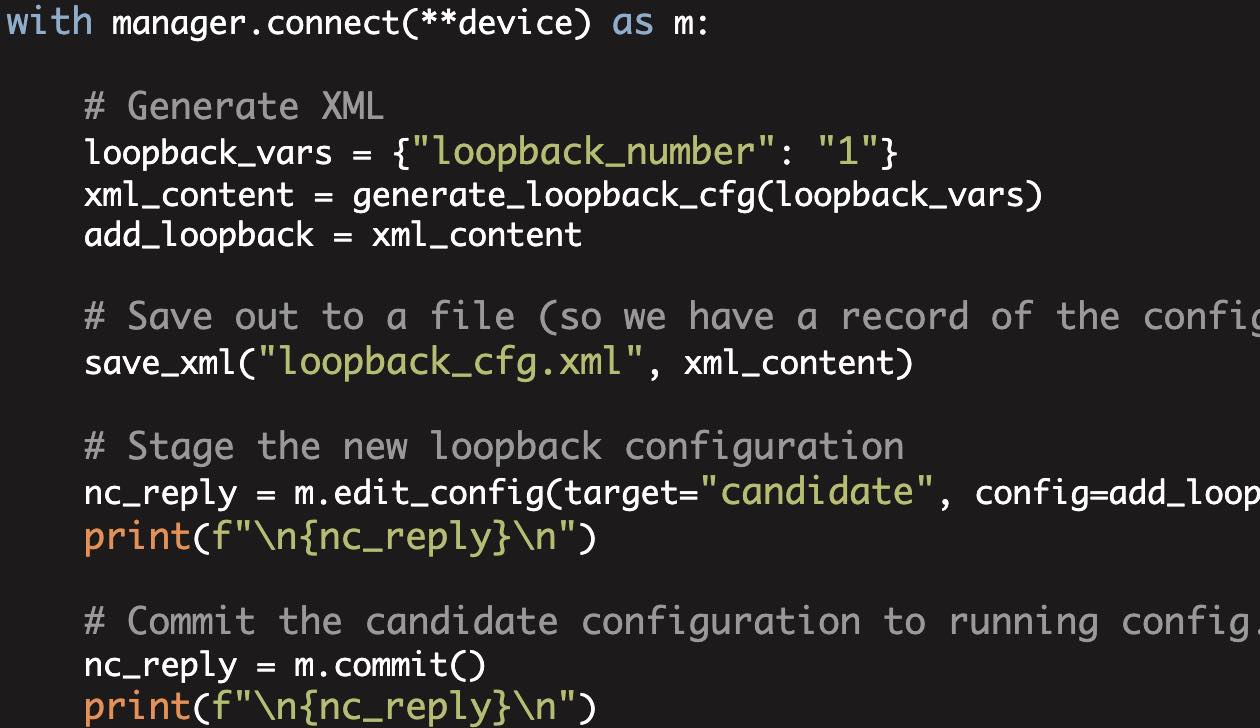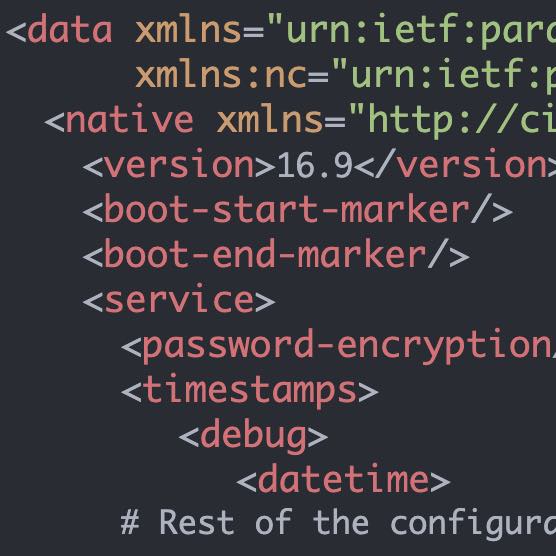
NETCONF
NETCONF: Abstract the Abstraction
Now I want to keep the XML configuration file in an external file and we want to abstract away the hard-coding of the loopback.

NETCONF
NETCONF: Abstract the Abstraction
Now I want to keep the XML configuration file in an external file and we want to abstract away the hard-coding of the loopback.

IOS-XE and NETCONF Candidate Configuration Testing, Part1
At some point in the relatively recent past, Cisco added candidate configuration support into Cisco's IOS-XE NETCONF implementation.
NAPALM's Commit-Confirm Feature
In May of 2021, I added a commit-confirm feature to NAPALM. This feature is currently only supported on the Arista EOS and Juniper Junos platforms.
In this series of videos, I explain how the commit-confirm feature operates and show some examples of how to use it in NAPALM:

TTP: Part1
This series of video discusses the Template Text Parser (TTP) library and how it can be used to parse the semi-structured data that we receive back from network devices.
In these videos, I provide an overview of TTP, covers certain TTP basics, and demonstrates parsing network device show-command output using TTP.

TTP: Part2
This series of video discusses the Template Text Parser (TTP) library and how it can be used to parse the semi-structured data that we receive back from network devices.
In these videos I dive into configuration parsing using TTP including TTP groups, how the group order affects processing, and detailing certain regular expression modifiers.

TTP: Part3
This series of video discusses the Template Text Parser (TTP) library and how it can be used to parse the semi-structured data that we receive back from network devices.
In these videos I cover configuration parsing using TTP including using the _start_ modifier, parsing a full configuration, and completing a full-cycle (i.e. using TTP for vars extraction and then Jinja2 for configuration regeneration).


